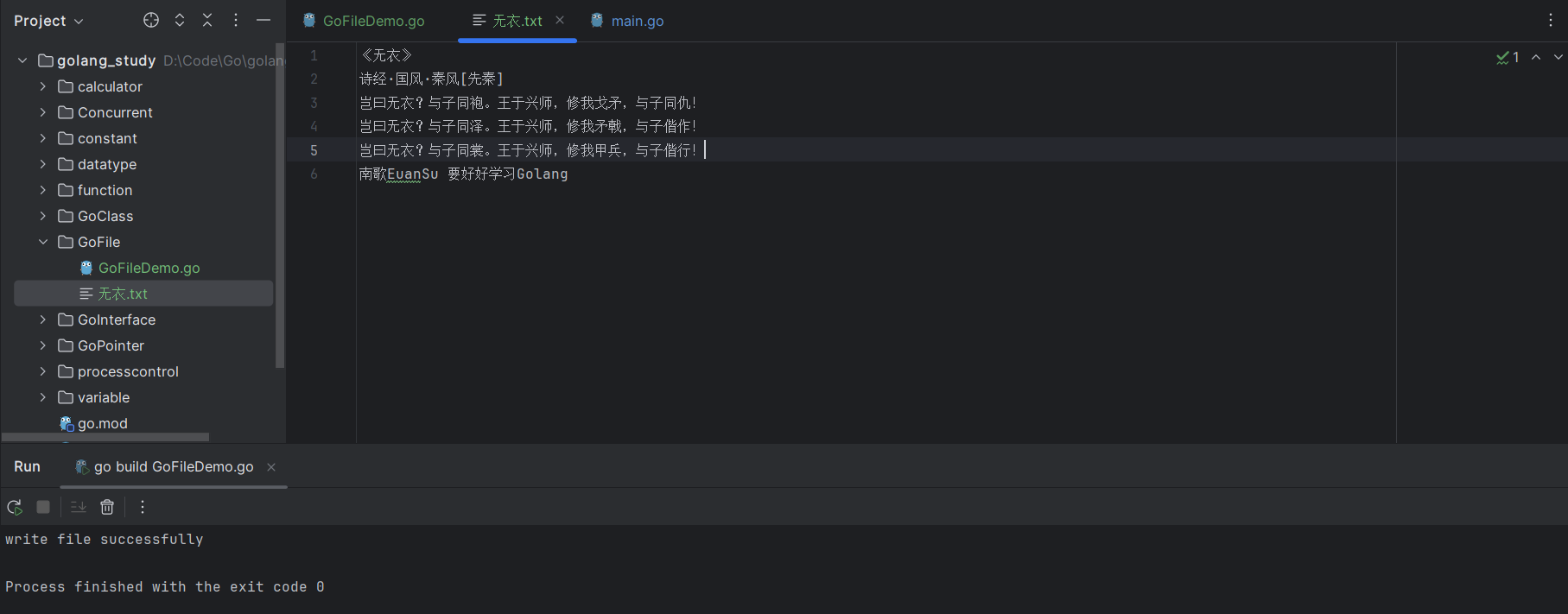Go语言中的文件操作及读写
Go 语言中的文件操作及读写
1.文件操作
1.1 目录文件列表
使用 os.ReadDir 方法获取指定目录下的文件列表,这里需要注意对于文件列表的遍历操作,实现代码如下。
package main
import (
"fmt"
"os"
)
// 获取目录下的文件列表
func getDirFile(targetDir string) {
// 读取目录下的文件和目录
entries, err := os.ReadDir(targetDir)
if err != nil {
fmt.Printf("get %s directory files failed,message is %s", targetDir, err)
}
// 遍历文件和目录列表
fmt.Printf("%s directory file list is:", targetDir)
for _, entry := range entries {
fmt.Print(" ", entry.Name())
}
fmt.Println()
}
// main函数调用获取文件列表的方法
func main() {
// 获取目录下的文件列表
targetDir := "GoFile"
getDirFile(targetDir)
}运行代码,能够拿到 GoFile 目录下的文件列表。
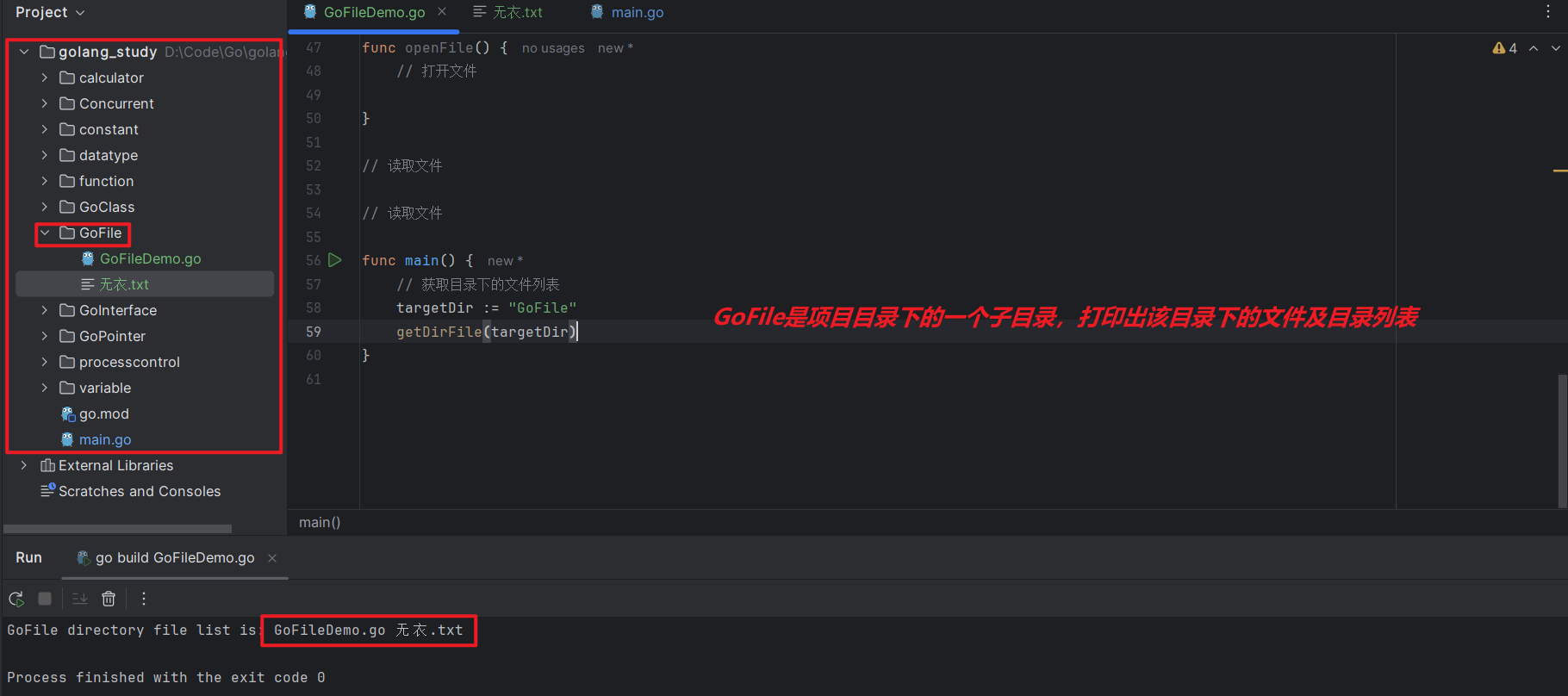
1.2 创建文件
使用 os.Create 进行文件的创建,这里需要传递一个完整的路径或项目下的一个路径。
package main
import (
"fmt"
"os"
)
// 创建文件
func createFile(filePath string) {
// 创建或打开文件
file, err := os.Create(filePath)
if err != nil {
fmt.Println(err)
}
fmt.Println("create file successfully")
// 使用 defer 确保文件在函数退出时关闭
defer file.Close()
}
func main() {
// 在GoFile目录下创建文件example.txt
createFile("GoFile/example.txt")
// 打印出GoFile目录下的文件列表
getDirFile("GoFile")
}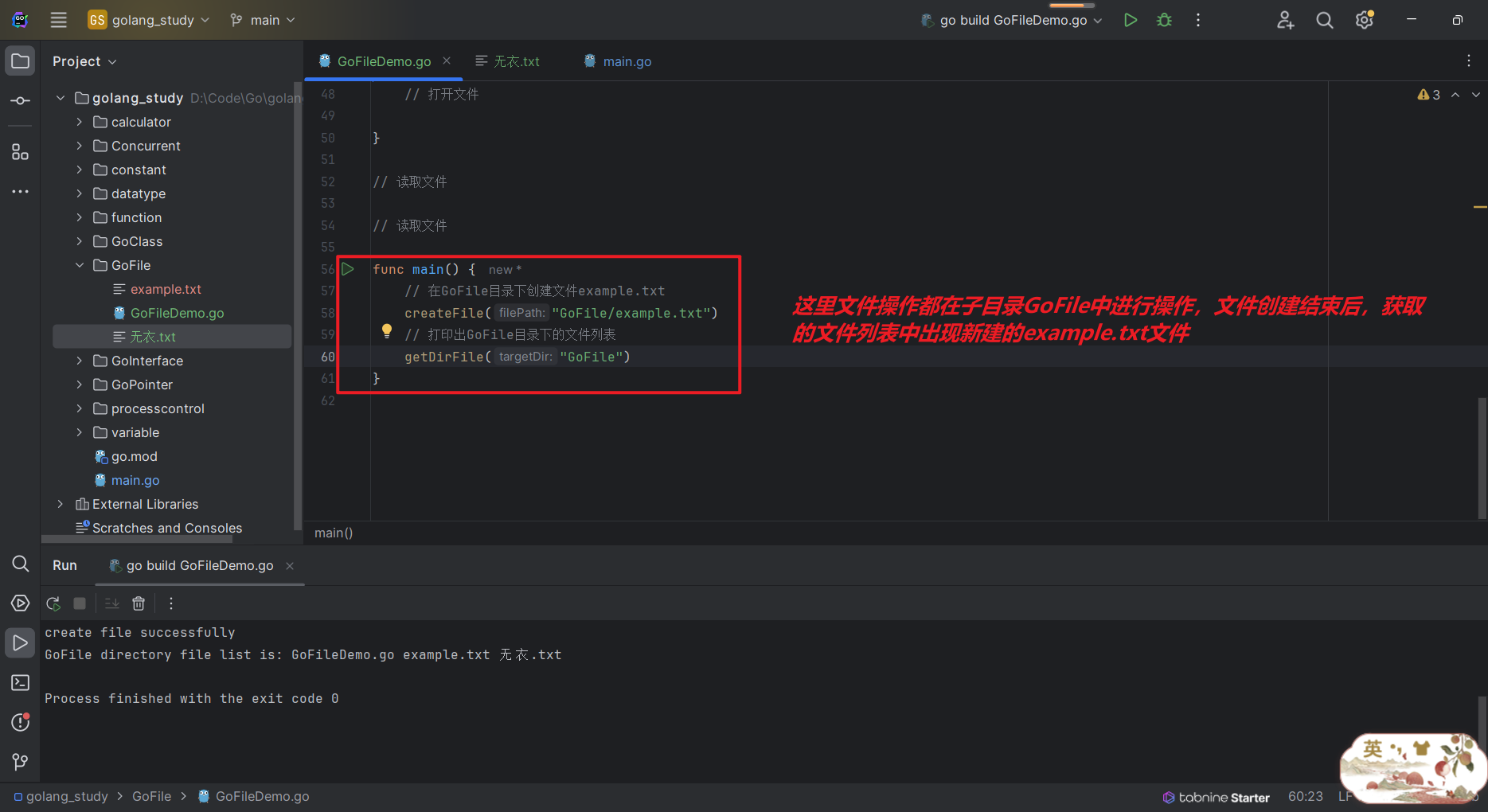
1.3 重命名文件
使用 os.Rename() 方法进行文件的重命名操作。
package main
import (
"fmt"
"os"
)
// 修改文件名称
func renameFile(filePath, filePathNew string) {
// 重命名文件
err := os.Rename(filePath, filePathNew)
if err != nil {
fmt.Println("Error renaming file:", err)
return
}
fmt.Println("Renamed GoFile successfully")
}
func main() {
// 在GoFile目录下创建文件example.txt
createFile("GoFile/example.txt")
// 打印出GoFile目录下的文件列表
getDirFile("GoFile")
}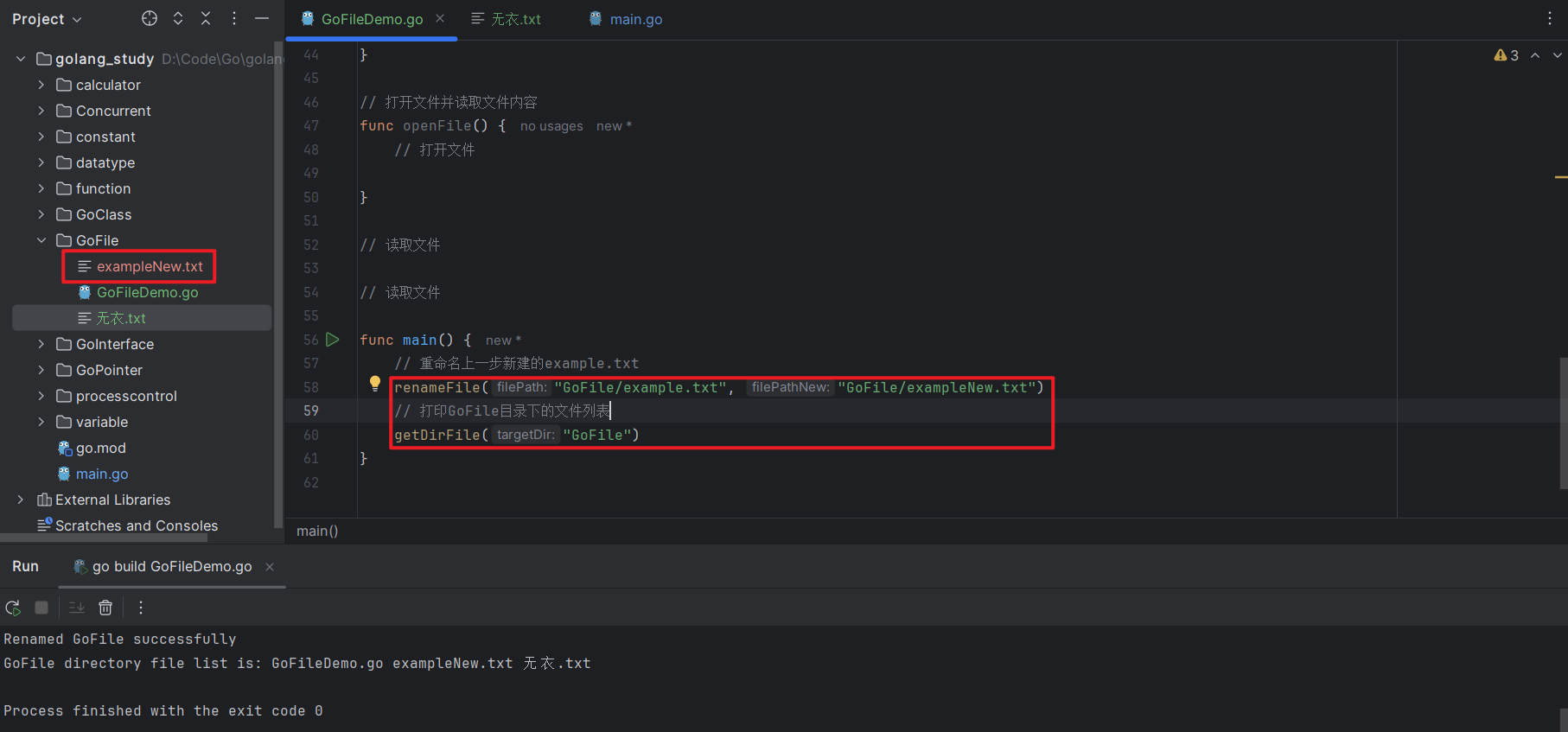
1.4 删除文件
使用 os.Remove() 进行文件的删除操作。
package main
import (
"fmt"
"os"
)
func deleteFile(targetFile string) {
err := os.Remove(targetFile)
if err != nil {
fmt.Printf("delete file failed, message is %s", err)
}
fmt.Println("delete file successfully")
}
func main() {
// 删除目录下的exampleNew.txt文件
deleteFile("GoFile/exampleNew.txt")
// 打印GoFile目录下的文件列表
getDirFile("GoFile")
}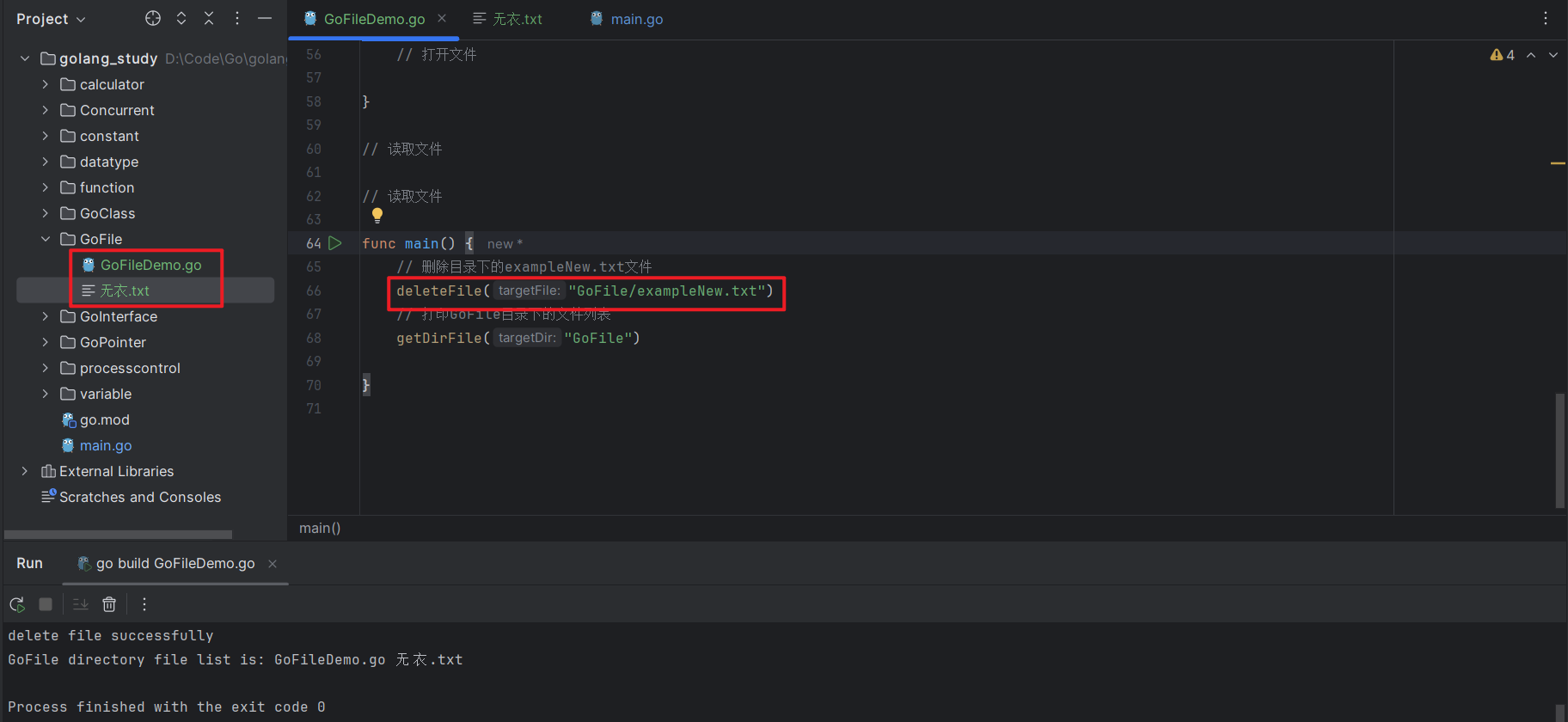
2.文件读写
2.1 读取文件内容
读取文件内容分为两种方式:1.直接读取整个文件的内容、2.打开文件,将文件转化为 scanner 对象,逐行进行读取,实现分别如下。
使用 os.ReadFile() 读取整个文件内容。
package main
import (
"fmt"
"os"
)
// 读取文件(读取整个文件)
func readFile(targetFile string) {
data, err := os.ReadFile(targetFile)
if err != nil {
fmt.Printf("read file failed, message is %s", err)
}
fmt.Println(string(data))
}
func main() {
// 读取整个文件的内容
readFile("GoFile/无衣.txt")
}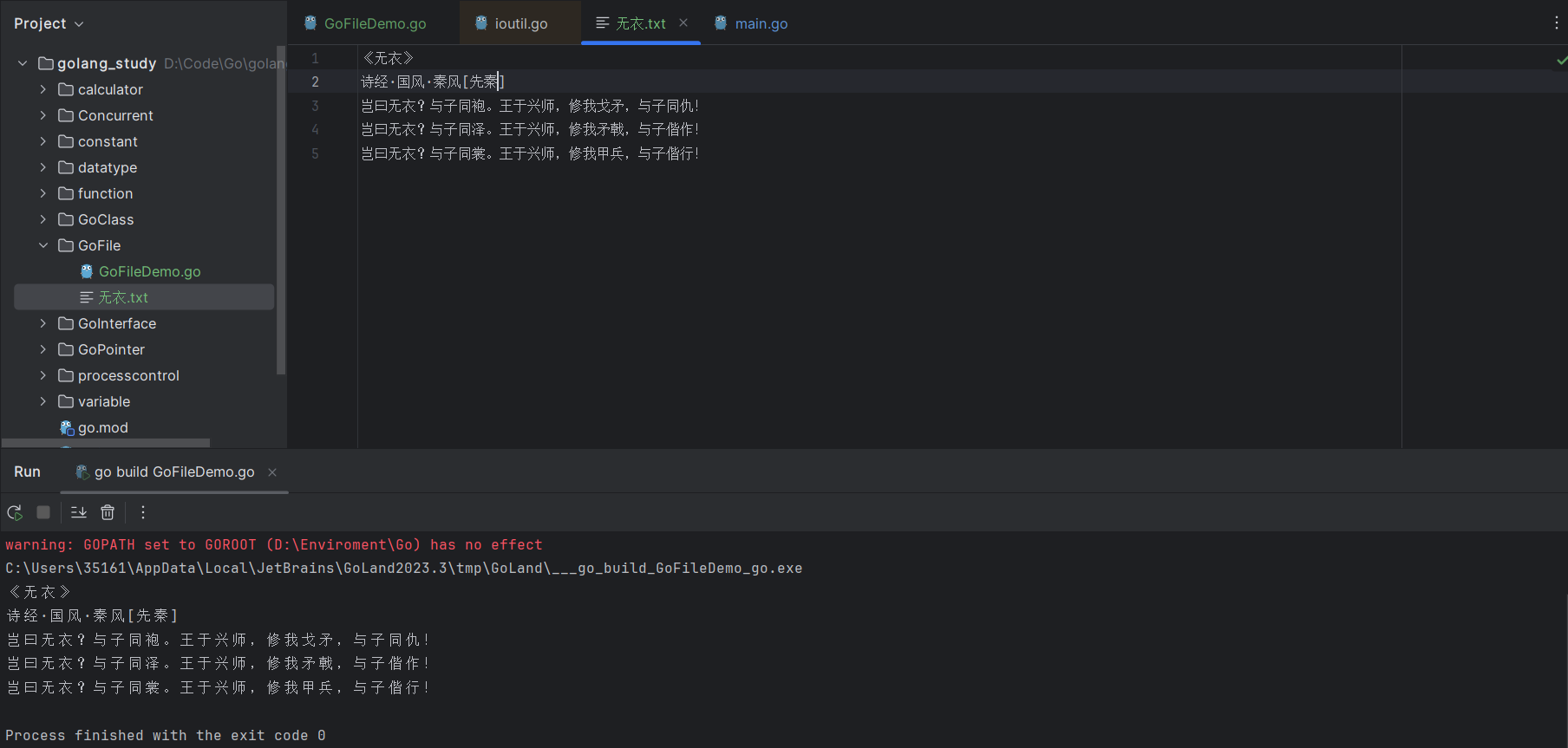
使用 os.Open() 打开文件后,将文件转化为 scanner 后逐行进行读取。
package main
import (
"bufio"
"fmt"
"os"
)
// 读取文件(逐行读取文件)
func readFileLine(targetFile string) {
// 打开文件
file, err := os.Open(targetFile)
if err != nil {
fmt.Printf("read file failed, message is %s", err)
}
defer file.Close()
// 构造一个Scanner
scanner := bufio.NewScanner(file)
for scanner.Scan() {
fmt.Println(scanner.Text())
fmt.Println("--------------------------------")
}
if err := scanner.Err(); err != nil {
fmt.Printf("change file to scanner failed,message is %s", err)
}
}
func main() {
readFileLine("GoFile/无衣.txt")
}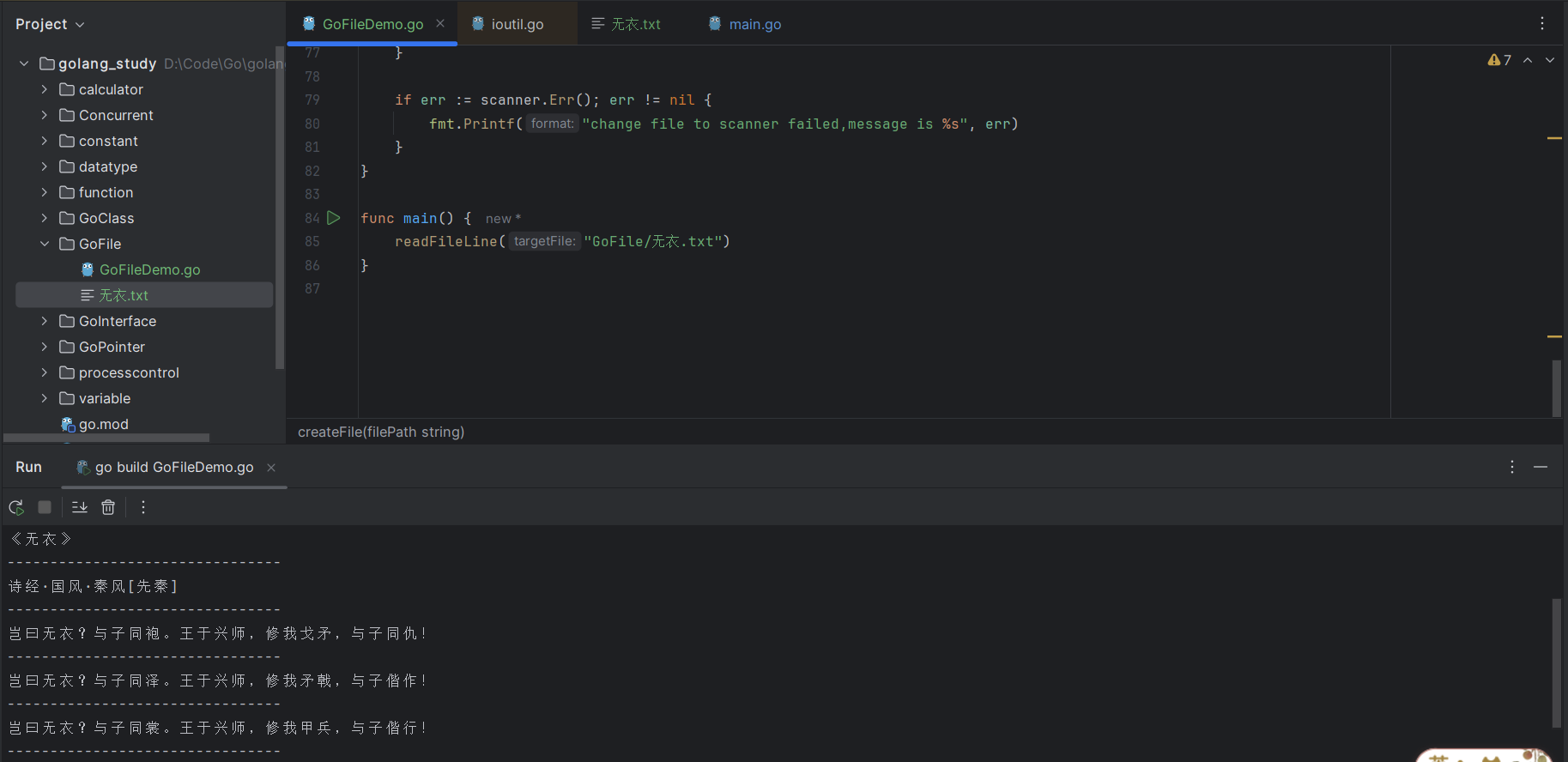
2.2 写入文件
使用 os.OpenFile 以追加模式打开文件,并使用 WriteString 追加内容。
package main
import (
"fmt"
"os"
)
func wrirteFile(targetFile string) {
// 打开文件,如文件不存在会报错
file, err := os.OpenFile(targetFile, os.O_APPEND|os.O_WRONLY, 0644)
if err != nil {
fmt.Printf("write file to %s failed,message is %s", targetFile, err)
}
defer file.Close()
_, err = file.WriteString("\n南歌EuanSu 要好好学习Golang")
if err != nil {
fmt.Printf("write file %s failed,message is %s", targetFile, err)
}
fmt.Println("write file successfully")
}
func main() {
wrirteFile("GoFile/无衣.txt")
}